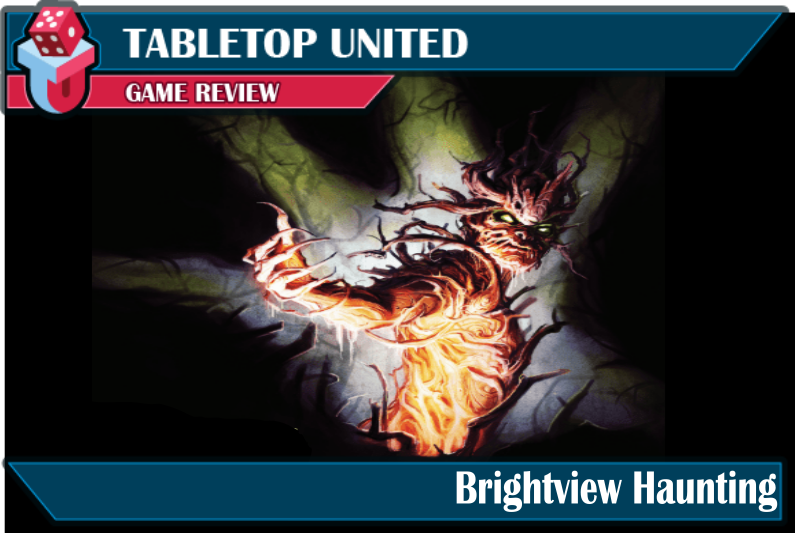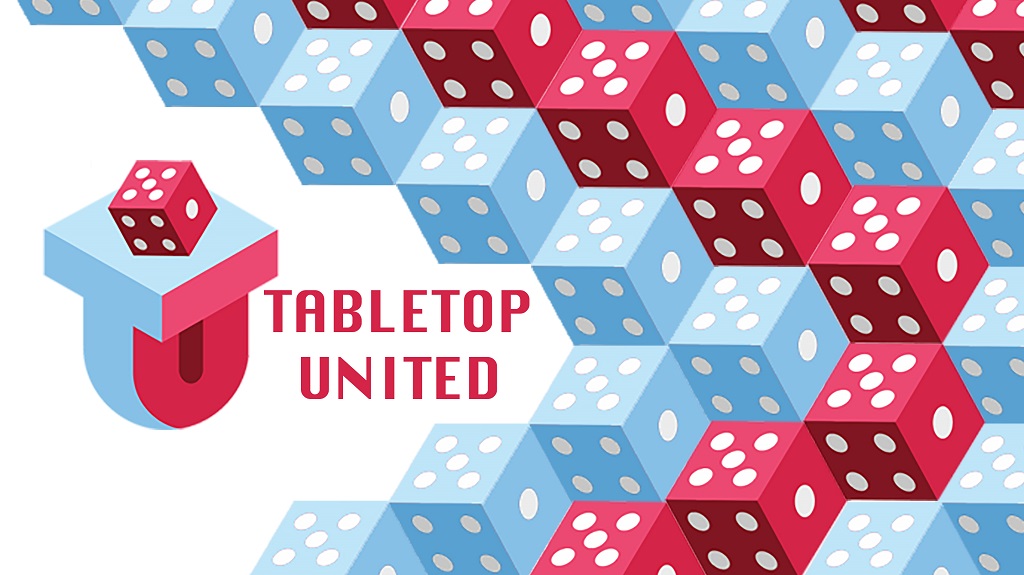The Brightview Haunting

Designer: Justin Gale
Artist: Irina French (Illustration), Henning Ludvigsen (Board Art), David Richards (Graphic Design)
Publisher: Typhon Games
Year Published / Kickstarted: 2025 (Kickstarter)
No. of Players: 2–6
Ages: 14+
Playing Time: 45-60 minutes
Main Mechanic / Theme: One-vs-Many, Horror, Area Control, Hand Management
“Will you save your brother or become the thing that hunts him?”
— A haunting, asymmetric horror game where teamwork is vital, betrayal is inevitable, and every turn drips with dread.
Disclaimer: Publisher provided a prototype of the game for this review.
Overview
The Brightview Haunting drops players into a chilling horror narrative brought to life through tense asymmetric gameplay. One player takes on the role of the Whisperer—a demonic entity unleashed in the forests of Brightview—while the rest play as Exorcists trying to save a teenager trapped in an ancient Elder Tree. Using clever teamwork, strategic movement, and ritual item management, Exorcists race against corruption and possession. Meanwhile, the Whisperer stalks, manipulates, and corrupts them, turning fallen allies into new horrors.
As Typhon Games describes it:
“A one-versus-many cooperative horror game where a group of friends must become Exorcists to save Bert Hudson before the Whisperer possesses them all.”

Gameplay and Mechanics
The Brightview Haunting uses a blend of movement optimization, card-based item play, tactical positioning, and evolving abilities to craft a richly interactive experience. At the heart of the game is the tension between the Exorcists’ teamwork and the Whisperer’s growing control.
Exorcists take two actions per turn—moving, searching, using items, traversing portals, invoking rituals, or trading with teammates. They must find and place ritual items on three boards, manage their corruption levels, and try to trigger rituals before they succumb to the Whisperer’s influence.
The Whisperer, on the other hand, gradually unlocks terrifying powers via a Control Meter, from slipping through walls to removing the Exorcists' salt-based protections. Through abilities like Ensnare, Pulse, and Possess, the Whisperer manipulates the board—and the players.
Possession is a standout mechanic: once an Exorcist hits maximum corruption, they switch teams and begin hunting their former allies. This twist creates incredible narrative tension and strategic surprise.

Theme, Artwork, Illustration, Graphic Design, and Layout
The artwork in The Brightview Haunting is nothing short of stunning. The board, illustrated by Henning Ludvigsen, captures the eerie atmosphere of a haunted forest with moody lighting and sharp detail. Character standees, item cards, and ritual boards are richly themed, and the use of physical tokens—like salt lines, corruption meters, and echo tokens—enhances the tactile sense of the creeping horror.
The graphic design is clean and intuitive, with symbols and action icons easy to reference. The player aids are especially helpful for learning the game and streamlining turns. Nothing gets in the way of gameplay immersion—if anything, the visual aesthetic amplifies it.

Inclusivity and Accessibility
The Brightview Haunting makes a strong first impression with its narrative diversity, putting a sibling bond (Andrea and Bert Hudson) at the center of its story. The Exorcist characters feature a range of personalities and roles, and though more explicit representation of race, disability, or queerness would strengthen its inclusivity, the game does avoid harmful tropes often seen in horror media.
Accessibility-wise, the prototype includes well-contrasted tokens, readable fonts, and a rulebook organized with beginner-friendly flow. The visual clarity of blocked terrain and grid movement supports ease of play for neurodiverse gamers or those with spatial reasoning concerns. The corruption system—while conceptually tied to horror—never stigmatizes mental illness or disability, which is a thoughtful departure from genre clichés.
Future editions might further improve accessibility by including colorblind-friendly icons. Additionally, the most frustrating part of the entire game is the setup of the Search and Echo tokens. As someone with a visual impairment, I had difficulty locating the tokens’ correct spaces on the relative small image of the board. Perhaps a larger image of the board only in the instruction booklet will help speed up setup and make the game more accessible.

What Worked
- Asymmetric Play: The Whisperer vs. the Exorcists creates natural tension and evolving gameplay.
- Possession Mechanic: Exorcists switching sides mid-game is a brilliant narrative and mechanical twist.
- Immersive Theme: Salt circles, corrupted forests, ancient rituals—it’s dripping with horror flavor.
- High Replayability: Multiple item decks, dynamic events, and variable token placement keep things fresh.
- Quality Components: Sturdy board, beautifully illustrated cards, and satisfying token-based strategy.
Final Thoughts
The Brightview Haunting is a chilling, cinematic experience that plays like a supernatural showdown between Betrayal at House on the Hill, Dead of Winter, and Fury of Dracula. It blends tactical board play with constantly evolving threat dynamics. The corruption and possession systems give it teeth, while the cooperative strategy demands constant table talk and tough decisions.
If your group loves horror with depth, betrayal, and a touch of the demonic, this one’s an instant back. Our group couldn’t stop talking about the endgame—win or lose, it always left us with a story to tell. The Brightview Haunting is a haunting triumph.
Verdict: Must-play for horror fans. Don’t walk—run into the forest.
Find more information on the crowdfunding campaign HERE.
http://www.tabletopunited.com/index.php/reviews/226-the-brightview-haunting

About the Author
Jamie L. McDaniel, Ph.D., is a Professor of English at Radford University in Radford, Virginia.
His research and teaching interests include game design, accessibility, disability studies, and the horror genre.

